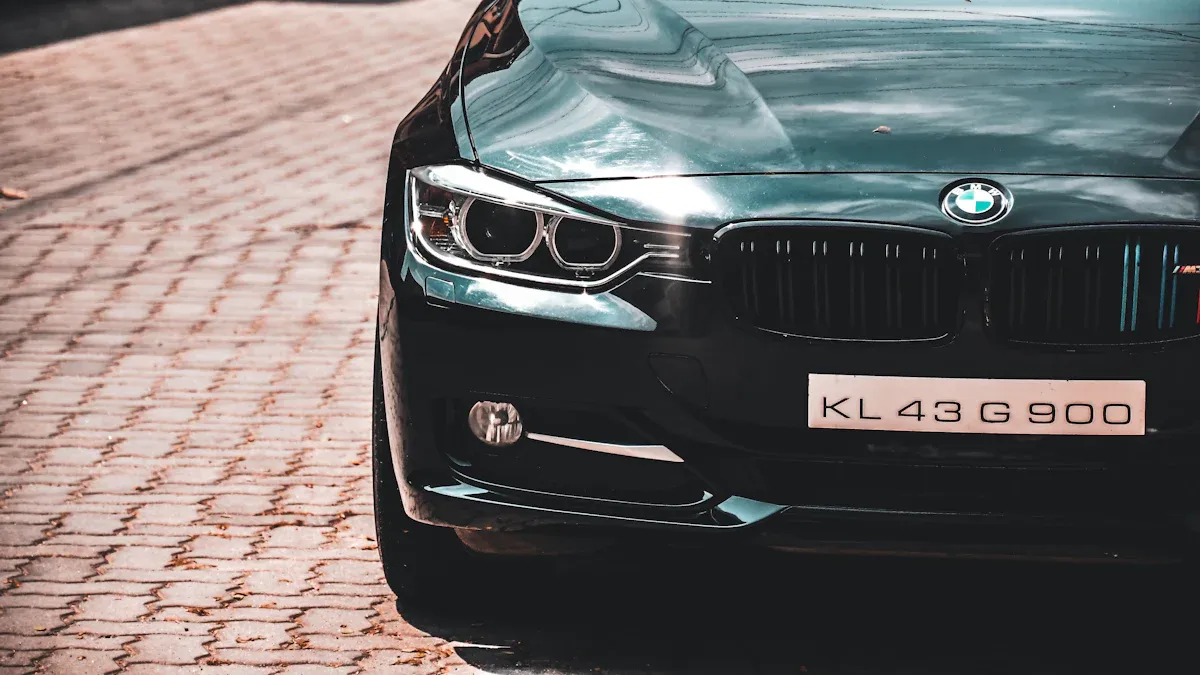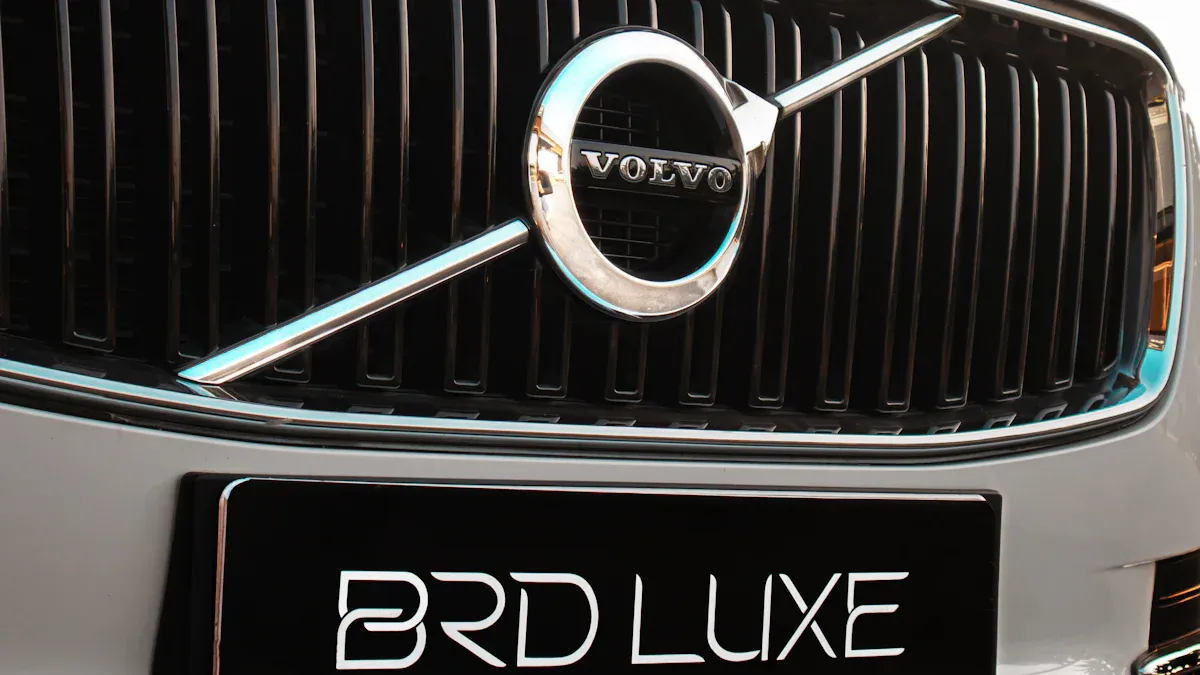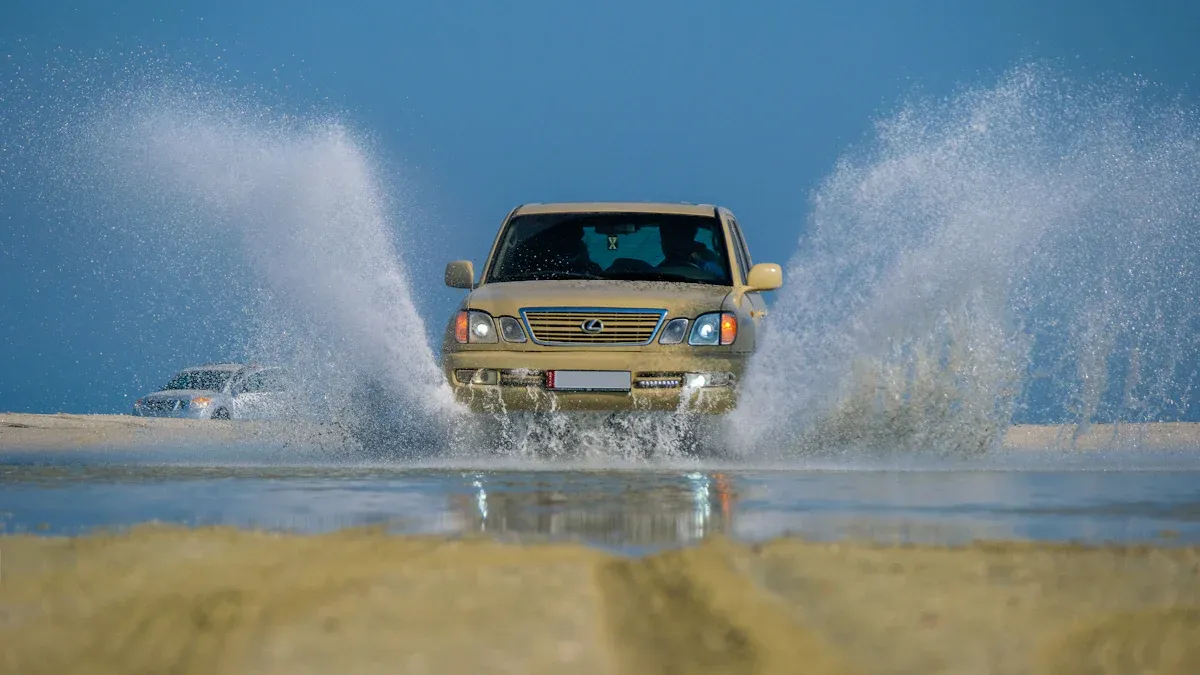5 Must-Know Tips for Choosing a Reliable Helius Headlamp

Imagine being stuck in the dark during a power outage or navigating a rugged trail at night. A reliable headlamp can make all the difference. Whether you're camping, caving, or working in dim spaces, dependable lighting ensures safety and efficiency. The Helius flashlight stands out for its durable design and reliable illumination, making it a favorite among outdoor enthusiasts and emergency responders alike. Flashlight reviews often highlight its weatherproof features, which are crucial for extreme conditions. From night fishing to home repairs, the right flashlight keeps you prepared for anything.
Key Takeaways
Pick a headlamp with adjustable brightness. This lets you change the light for different tasks. It helps you see better and saves battery power.
Think about the battery type. Rechargeable batteries are good for the environment and work well. Hybrid batteries are useful in emergencies.
Get a strong and water-resistant headlamp. High-quality materials and a good IP rating make it last longer in tough weather.
Make sure it’s comfortable to wear. A lightweight headlamp with adjustable straps won’t hurt after long use.
Choose one with useful features. Red light and strobe modes are helpful for many activities and situations.
Brightness and Beam Quality

When choosing a headlamp, brightness and beam quality are two of the most important features to consider. They determine how well you can see in different environments and how effectively the flashlight meets your needs.
Lumens and Adjustable Brightness
Why adjustable brightness is essential
Adjustable brightness is a game-changer for headlamps. It lets you control the light output based on your surroundings. Whether you're reading a map or hiking in the dark, you can customize the lumens to match the task. This flexibility improves visibility and reduces unnecessary strain on your eyes. Plus, it helps conserve battery life, making your flashlight more efficient for extended use.
Ideal lumen range for everyday use
For most daily activities, a headlamp with 100 to 300 lumens works well. This range provides enough brightness for tasks like walking your dog or fixing something in a dimly lit room. If you need a high lumen tactical flashlight for outdoor adventures or emergencies, look for models offering 500 lumens or more. These deliver powerful illumination for greater distance and clarity.
Beam Distance and Spread
Spot vs. flood beams: Which is better?
Spot beams and flood beams serve different purposes. Spot beams focus light into a narrow, long-distance beam, making them ideal for activities like night hiking or searching for objects far away. Flood beams, on the other hand, spread light over a wide area. They're perfect for close-up tasks or illuminating a campsite. Some headlamps combine both, giving you the best of both worlds.
How beam quality impacts visibility
Beam quality directly affects how well you see in various conditions. A poorly designed beam can create dark spots or uneven lighting, reducing visibility. A high-quality flashlight ensures smooth, consistent light distribution. This makes it easier to navigate tricky terrain or focus on detailed tasks.
Color Temperature
Warm vs. cool light: Pros and cons
The color temperature of your headlamp impacts how comfortable it is to use. Warm light offers several advantages:
Reduced eye strain due to lower intensity light.
Improved night vision, aiding adaptation to darkness.
Increased comfort for close-up tasks and relaxation.
Cool light, however, excels in precision tasks and situations requiring alertness. Here's a quick comparison:
Light Type | Advantages |
|---|---|
Cool Light | - Enhanced visibility for precision tasks. |
- Increased alertness, reducing fatigue. | |
- True color rendering for better object identification. | |
Warm Light | - Comfort and relaxation, ideal for unwinding. |
- Reduced beam intensity, easier on the eyes. | |
- Improved sleep patterns by signaling winding down. |
When to prioritize color accuracy
If you're working on tasks that require identifying colors accurately, such as reading maps or inspecting objects, prioritize cool light. It provides better color rendering, helping you distinguish details more clearly. For general use or activities that involve prolonged exposure, warm light is a better choice.
Battery Life and Power Options
When it comes to choosing a reliable flashlight, battery life and power source are critical factors. A headlamp that runs out of power too quickly can leave you stranded in the dark. Let’s explore the different battery options and how to make the most of them.
Battery Types
Rechargeable vs. disposable batteries
You’ll find three main types of batteries in headlamps: alkaline, nickel-metal hydride (NiMH), and lithium-ion. Each has its strengths and weaknesses. Here’s a quick comparison:
Battery Type | Characteristics | Advantages | Disadvantages |
|---|---|---|---|
Alkaline | Non-rechargeable, cheaper, longer shelf life | Cost-effective, easy to find | Not rechargeable, creates more waste |
Nickel-Metal Hydride | Rechargeable, more expensive, less power output compared to alkaline | Rechargeable, less waste | Higher initial cost, less power in headlamps |
Lithium Ion | Rechargeable, embedded in headlamps, charges via USB | Long lifespan, minimal charge degradation | Not removable, requires power source for charging |
Rechargeable batteries are a great choice for the environment. They reduce waste, minimize pollution, and can be reused hundreds of times. If you’re looking for a rechargeable flashlight, lithium-ion batteries are the most efficient option.
Benefits of hybrid power options
Some headlamps offer hybrid power options, combining rechargeable and disposable batteries. This gives you flexibility. You can use rechargeable batteries for everyday tasks and switch to disposables during emergencies when recharging isn’t possible.
Runtime and Efficiency
Estimating runtime based on usage
Runtime depends on how you use your flashlight. High brightness settings drain the battery faster, while lower settings conserve power. For example, a headlamp with 300 lumens might last 4 hours on high but up to 20 hours on low. Always check the manufacturer’s runtime estimates to match your needs.
Tips for maximizing battery life
Want to extend your battery life? Try these tips:
Use lower brightness modes whenever possible.
Turn off the flashlight when you don’t need it.
Charge your batteries properly to maintain their longevity.
These simple habits can make a big difference, especially during long trips or emergencies.
Charging Features
USB charging: Convenience and speed
Many modern headlamps come with USB charging. It’s fast, convenient, and eliminates the need for disposable batteries. You can recharge your flashlight using a power bank, laptop, or even a car charger. This feature is perfect for people on the go.
Backup power options for emergencies
In emergencies, having backup power is essential. Keep spare batteries or a portable generator with USB ports in your kit. A weather radio with charging capabilities can also be a lifesaver. These options ensure your flashlight stays powered when you need it most.
Tip: Always carry extra batteries or a charger during outdoor adventures. It’s better to be over-prepared than left in the dark!
Durability and Water Resistance

When you're choosing a headlamp, durability and water resistance are two features you can't overlook. A durable flashlight ensures it can handle rough conditions, while water resistance keeps it functional in wet environments. Let’s break down what to look for.
Build Quality
Materials for a durable headlamp
The material of your headlamp plays a huge role in its durability. Look for headlamps made from high-quality materials like aluminum or reinforced plastic. These materials resist wear and tear, making them perfect for outdoor adventures or demanding tasks. A durable flashlight with a solid build can survive accidental drops and rough handling.
Testing for impact resistance
You might wonder how to know if a headlamp can handle impacts. Manufacturers often test their products by dropping them from specific heights. A reliable headlamp should withstand drops from at least 1 meter without breaking. If you're planning to use your flashlight in rugged conditions, this is a must-have feature.
Weatherproofing
Understanding IP ratings
IP ratings tell you how well a headlamp resists dust and water. Here's a quick guide:
IP Rating | Dust Protection | Water Protection |
|---|---|---|
IP65 | Total dust ingress | Low-pressure water jets from any direction |
IP66 | Total dust ingress | High-pressure water jets from any direction |
IP67 | Total dust ingress | Immersion up to 1 meter for 30 minutes |
For example, the Black Diamond Storm 500-R has an IP67 rating, meaning it can survive submersion in water up to 1 meter for 30 minutes. This makes it a great choice for extreme weather or emergencies.
Why water resistance matters
Water resistance ensures your headlamp works even in rain or accidental water exposure. Whether you're caught in a storm or drop your flashlight in a puddle, a waterproof flashlight keeps you prepared. Models like the Streamlight 67101, with an IPX7 rating, are designed for reliability in harsh conditions.
Longevity and Warranty
Assessing a headlamp's lifespan
The lifespan of a headlamp depends on its bulb type. LED bulbs, commonly used in headlamps, last between 20,000 and 30,000 hours. This makes them a long-lasting option for regular use. If you're investing in a headlamp, check the bulb type to ensure it meets your needs.
Bulb Type | Lifespan (Hours) |
|---|---|
LED | 20,000 to 30,000 |
Laser | 30,000 to 50,000 |
Halogen | 500 to 1,000 |
HID | 2,000 to 5,000 |
Importance of a reliable warranty
A good warranty gives you peace of mind. It shows the manufacturer stands behind their product's quality. Look for headlamps with at least a one-year warranty. This ensures you're covered if something goes wrong, especially with frequent use.
Tip: Always check the warranty details before buying. It’s a small step that can save you a lot of hassle later.
Comfort and Portability
When choosing a headlamp, comfort and portability are just as important as brightness or durability. A well-designed headlamp ensures you can wear it for hours without discomfort, while its portability makes it easy to carry wherever you go.
Headband Design
Features of a comfortable headband
The headband is a key factor in how comfortable your flashlight feels during use. Here’s what to look for:
Material: Soft, breathable fabrics prevent irritation and keep you comfortable during long wear.
Style: Simple designs often feel lighter, while more elaborate ones may offer additional padding.
Fit: A snug fit prevents slipping and ensures the headlamp stays in place.
Color: While not essential, choosing a color you like can make your headlamp feel more personal.
Adjustable straps for a secure fit
Adjustable straps are a game-changer for headlamp users. They let you customize the fit to your head size, ensuring stability and comfort. A properly adjusted strap keeps the flashlight steady, so the beam stays where you need it. This is especially helpful when you’re running, hiking, or working in tight spaces. Plus, a secure fit reduces the risk of accidents by providing consistent illumination.
Weight and Balance
Lightweight designs for extended use
A compact and lightweight design is essential for extended use. Heavy headlamps can strain your neck and make long tasks uncomfortable. Look for models that balance durability with a lighter build. This ensures you can focus on your activity without feeling weighed down.
Balancing the headlamp for stability
Balance is just as important as weight. A well-balanced headlamp distributes its weight evenly across your head, preventing it from tilting forward or backward. This stability enhances portability and makes the flashlight more comfortable to wear for long periods.
Ergonomic Features
Tilt functionality for better focus
Tilt functionality is a must-have feature for any headlamp. It allows you to adjust the angle of the beam, so you can focus the light exactly where you need it. Whether you’re reading a map or working on a project, this feature improves visibility and reduces neck strain.
Easy-to-use controls for convenience
Ergonomic controls make operating your flashlight a breeze. Look for headlamps with intuitive buttons or switches that you can use even while wearing gloves. This ensures you can adjust settings quickly, whether you’re in the middle of a hike or fixing something at home.
Tip: Always test the controls before buying a headlamp. Simple, user-friendly designs save you time and frustration during use.
Additional Features and Versatility
When picking a headlamp, the extra features and functionality can make a big difference. These added options enhance usability and ensure your flashlight adapts to various situations.
Red and Night Vision Modes
Benefits of red light for night use
Red light is a handy feature for nighttime activities. It helps maintain your night vision by keeping your pupils from dilating too much. This makes it easier to see in the dark after turning off the light. Red light also has a softer glow, which doesn’t disturb others in your group or attract bugs. If you’re camping, reading, or navigating at night, this mode is a lifesaver. Hunters and wildlife enthusiasts will appreciate how red light minimizes disruption to animals, giving you a tactical edge.
When to use night vision modes
Night vision modes are perfect for low-light environments. Use them when you need to preserve your natural vision, like during stargazing or nighttime photography. They’re also great for group settings where you don’t want to blind others. If you’re hiking or fishing at night, these modes provide just enough light without startling wildlife or ruining the atmosphere.
Strobe and Emergency Functions
How strobe lights enhance safety
Strobe lights are more than just flashy extras. They provide intense bursts of light that grab attention quickly. This is especially useful in emergencies or low-visibility conditions like fog or rain. The rapid flashing pattern signals urgency, making it easier for others to locate you. Strobe lights can also deter potential threats, adding an extra layer of safety during outdoor adventures.
Emergency signaling features to consider
A good headlamp should include emergency signaling options. Look for flashlights with SOS or strobe modes. These features are invaluable when you need to alert rescuers or signal for help. They’re easy to activate and can make all the difference in critical situations.
Multi-Use Applications
Adapting the headlamp for different activities
A versatile headlamp adapts to your needs. Whether you’re hiking, working on a DIY project, or using it as part of your EDC (everyday carry), the right flashlight modes make all the difference. Some models even include extra features and functionality like adjustable beams or multiple brightness levels, ensuring you’re prepared for anything.
Why versatility is key for everyday use
Versatility ensures your headlamp isn’t limited to one purpose. A good EDC flashlight works for everything from camping trips to power outages. It’s lightweight, easy to carry, and packed with functionality. With the right features, your headlamp becomes a reliable tool for any situation.
Tip: Always choose a headlamp with multiple modes and extra features. It’s better to have options you don’t need than to need options you don’t have.
Choosing the right headlamp doesn’t have to be overwhelming. Remember these five key tips: focus on brightness, battery life, durability, comfort, and extra features. Each factor adds value to your experience, whether you're hiking, working, or preparing for emergencies. Think about your specific needs and how a headlamp fits into your routine.
The Helius flashlight is a great choice if you're looking for a value for money flashlight. It combines durability, performance, and versatility at a reasonable price. You’ll find it’s a reliable tool that delivers excellent value for everyday use. Why settle for less when you can get the best?
FAQ
What makes the Helius headlamp stand out from other brands?
The Helius headlamp combines durability, brightness, and versatility. It’s designed for outdoor enthusiasts and everyday users alike. With features like adjustable brightness, water resistance, and long battery life, it’s a reliable choice for any situation.
How do I know which lumen range is right for me?
Think about your activities. For casual use, 100-300 lumens work well. For outdoor adventures or emergencies, go for 500 lumens or more. Higher lumens provide better visibility over longer distances.
Can I use the Helius headlamp in heavy rain?
Yes! The Helius headlamp is water-resistant, with an IP rating that ensures it can handle rain or accidental splashes. It’s built to perform in tough weather conditions, so you don’t have to worry about getting caught in a storm.
How long does the battery last on a single charge?
Battery life depends on the brightness setting. On low, it can last up to 20 hours. High settings drain the battery faster, typically lasting around 4-6 hours. Always check the manufacturer’s runtime estimates for specific details.
Is the headlamp comfortable for extended use?
Absolutely! The Helius headlamp features a lightweight design and adjustable straps. These ensure a snug, comfortable fit, even during long hikes or work sessions. You won’t feel weighed down or strained while wearing it.
Tip: Adjust the straps before heading out to ensure maximum comfort and stability.
See Also
Selecting The Perfect Headlamp Flashlight For Your Needs
Essential Factors To Evaluate When Buying A Headlamp
Five Key Tips For Selecting Your Ideal EDC Flashlight
